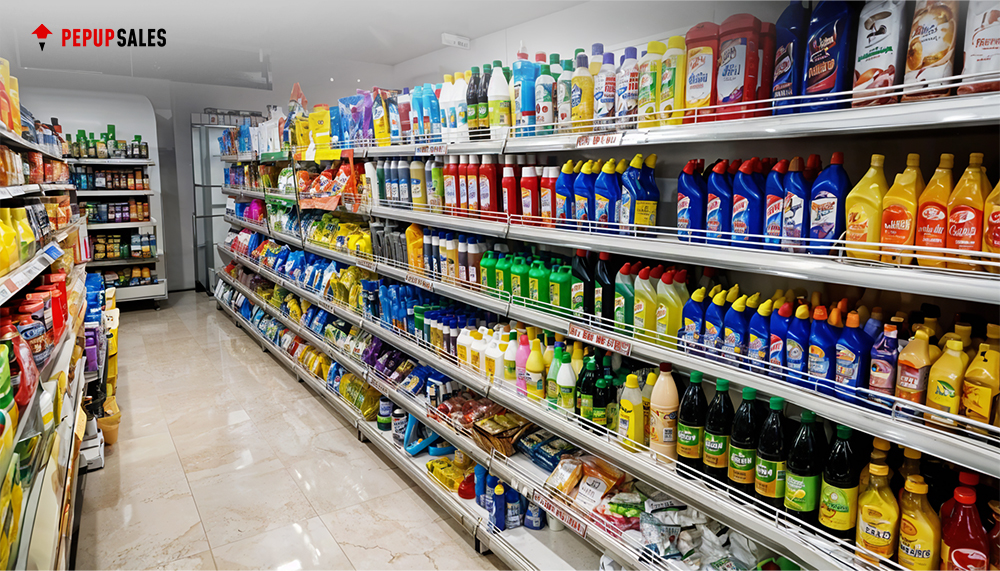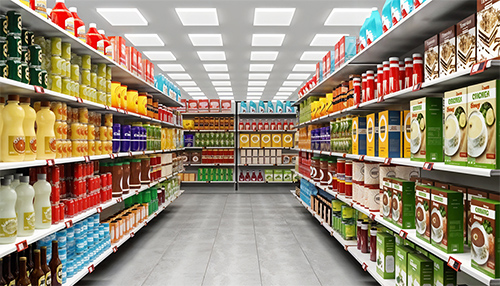Visual merchandising is the cornerstone of a successful retail strategy, shaping how customers engage with your brand and influencing their buying journey. It’s more than just arranging products; it’s about crafting an environment that speaks to your customers, guides their journey, and transforms casual browsers into loyal buyers. From the moment customers see your storefront to their final purchase decision, every visual element plays a crucial role in shaping their shopping experience and influencing their buying choices.
Whether you’re managing a bustling retail chain or running an intimate boutique, mastering these visual merchandising techniques can significantly impact your bottom line and set your store apart in today’s competitive retail landscape. As retail continues to evolve in our digital age, the power of physical store presentation has become more important than ever. Visual merchandising combines creativity with strategic thinking to create immersive shopping environments that customers can’t resist.
This guide explores nine proven visual merchandising techniques that help retailers worldwide boost sales and build stronger customer connections. These techniques are practical, results-driven strategies designed to transform any retail space into a compelling sales engine. Let’s dive into the key methods that can elevate your store’s visual appeal and drive consistent growth.
Understanding Visual Merchandising
Visual merchandising is the art and science of presenting products in a way that maximizes their visual appeal and desirability. From carefully crafted window displays to strategic product placements, every element works together to create an immersive shopping experience that drives customer engagement and increases sales.
The impact of effective visual merchandising extends beyond mere aesthetics. It serves as a silent salesperson, communicating your brand’s value proposition, enhancing product visibility, and ultimately influencing purchasing decisions. Let’s delve into how this powerful tool can transform your retail business.
9 Essential Visual Merchandising Techniques
1. Themed Displays: Creating Immersive Experiences
Themed displays is one of the effective ways of visual merchandising, which transforms ordinary retail spaces into compelling storytelling environments. By creating cohesive themes that resonate with your target audience, you establish emotional connections that drive engagement. These displays should evolve with seasons, trends, and cultural moments, ensuring your store remains fresh and relevant. The key lies in creating seamless transitions between different themed areas while maintaining a consistent brand narrative throughout the space.
2. Strategic Product Placement
Understanding customer behavior patterns and shopping habits becomes essential for implementing effective product placement strategies. Vertical merchandising establishes natural viewing patterns along with horizontal merchandising that helps customers find products across different categories. A successful shopping space results from implementing these two strategies together which creates an active environment that shows products well and lets customers explore. Strategies for product placement should be developed based on traffic flow analysis combined with sight line considerations along with product compatibility evaluation.
3. Merchandising Hierarchy: Organizing for Impact
Your business achieves improved customer shopping experience through a properly organized merchandising hierarchy system. The structured organization system enables customers to find their desired items easily and uncover related products simultaneously. The retail organization should follow customer-buying patterns through carefully defined sections that present products in a logical order. The defined structure delivers improved customer satisfaction as well as maximized sales performance through natural product exploration and buying behavior.
4. Digital Displays and Signage Integration
Businesses operating in contemporary retail benefit tremendously from using digital displays and signage systems. Real-time messaging and targeted content delivery become possible through dynamic messaging platforms which provide never-before-seen flexibility. Digital integration needs to improve physical shopping rather than create confusion through its implementation by connecting traditional elements with digital ones. A regular assessment of digital display quality helps maximize their effect and financial return.
5. Strategic Use of Props
Props serve as powerful visual elements that enhance product presentations and reinforce brand identity. Your product displays will become more effective by choosing props which enhance both merchandise and display context. Your chosen props should develop an environment that works together with your merchandising approach but never steals attention from your merchandise display. You should analyze seasonal demands and brand compatibility and functional requirements before including props in your visual merchandising approach.
6. Custom Shelf Displays
Innovation in shelf customization creates unique visual experiences that differentiate your store from competitors. Custom shelf displays should reflect your brand identity while optimizing product visibility and accessibility. Consider factors such as product size, category relationships, and customer interaction patterns when designing custom shelf solutions. These displays should facilitate natural product discovery while maintaining operational efficiency and ease of maintenance.
7. Product Promoter Integration
Visual merchandising success depends heavily on human involvement for its successful completion. Brand ambassadors called product promoters deliver displays to life through their personal engagements with customers. Product promoters ensure display quality standards and deliver product information while collecting essential customer feedback. Product promoters improve customer satisfaction and help maintain optimal implementation of visual merchandising methods through authentic customer feedback.
8. Campaign Excellence
A visual merchandising campaign requires thorough planning followed by perfect execution to succeed. The success of marketing objectives can be achieved through store experiences which should follow the broader marketing plan. The development of campaign strategies must involve decisions about timeframes as well as message consistency and visual elements. Performance monitoring occurs regularly to maintain campaign effectiveness and market relevance while keeping the ability to change strategies based on market changes and customer feedback.
9. Regular Merchandising Audits
Regular merchandising audits create systematic execution of visual merchandising plans. Performance metrics assessment and display compliance evaluation as well as improvement opportunities detection should be included in the audit process. The process of continuous monitoring enables organizations to preserve their standards through actionable feedback that helps improve strategic approaches. The application of advanced analytics and technology solutions helps both improve audit effectiveness and efficiency.
The Future of Visual Merchandising
Visual merchandising techniques need to transform according to shifting consumer demands and new technological developments in the retail industry. Retailers use digital tools with artificial intelligence and data analytics to transform their visual merchandising approaches which results in more personalized and effective customer experiences.
Conclusion
Visual merchandising remains a critical driver of retail success, combining creativity with strategic thinking to create compelling shopping environments. By implementing these nine techniques effectively, retailers can create engaging store experiences that not only attract customers but also drive sustainable sales growth.
At PepUpSales, we understand the importance of optimizing in-store experiences to maximize sales. Our sales force automation and field sales software help retailers streamline operations, track performance, and improve merchandising execution effortlessly. With real-time insights and data-driven decision-making, retailers can stay ahead in today’s competitive landscape.
Schedule a free demo with PepUpSales today and take your retail merchandising strategy to the next level!



